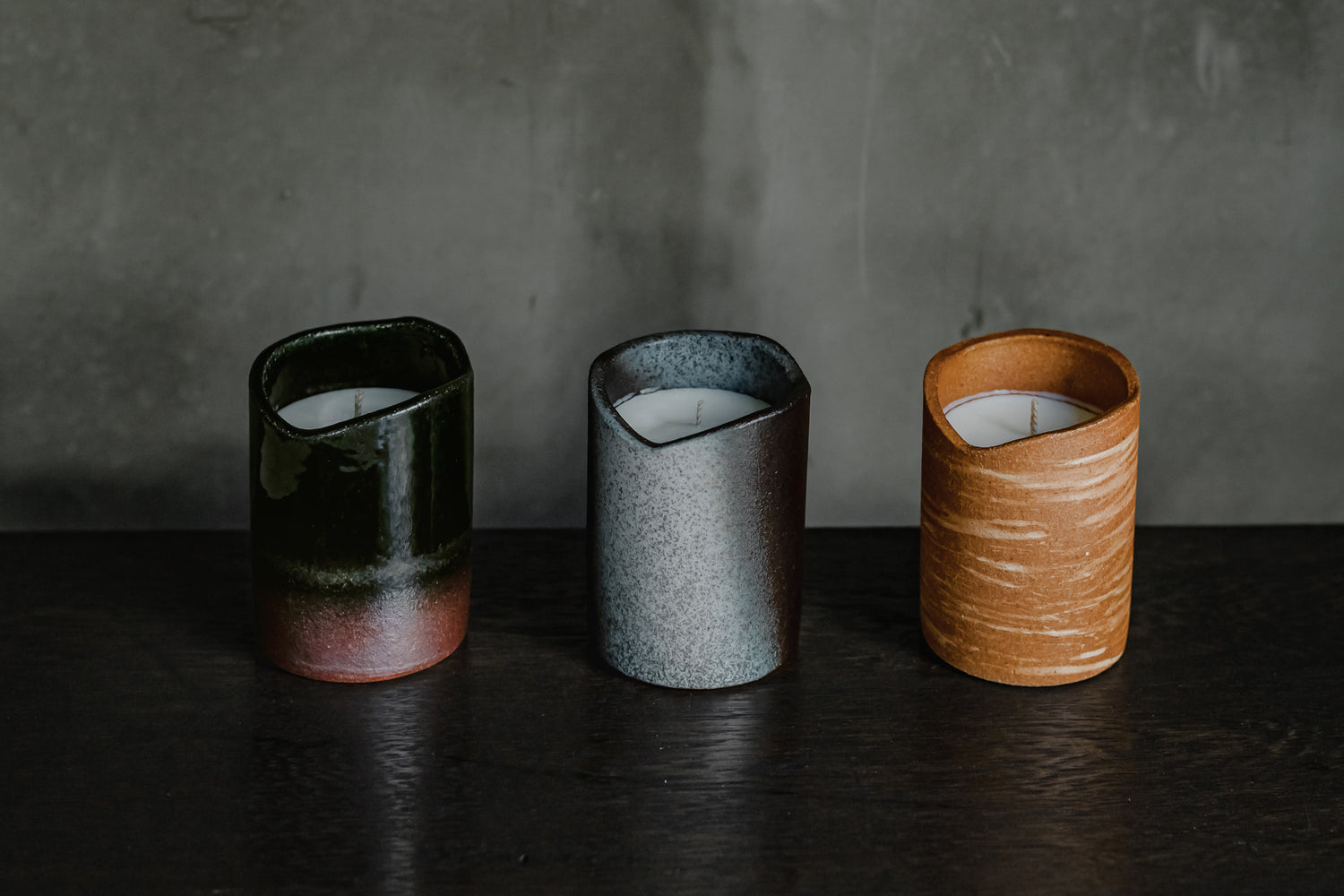This time we would like to introduce Shigaraki ware, which is used for our candles.
Shigaraki ware, which was first produced in the Kamakura period, is produced in Koka City, Shiga Prefecture, located in the mountains near the prefectural border with Kyoto Prefecture.
The six production areas that pioneered pottery in Japan are called the Six Ancient Kilns of Japan, and the six are Seto, Echizen, Tamba, Tokoname, Bizen, and Shigaraki. Each has a long history, but Shigaraki has a history of about 1300 years.
First of all, I would like to briefly explain the visual characteristics of Shigaraki ware.
The key points when appreciating pottery, such as the texture of the pottery and the way the glaze is applied, are called `"scenery'', and there are several scenery that are characteristic of Shigaraki ware.
The appearance of large grains of clay that were not completely dissolved during firing and appearing on the surface is called ``stone haze.''
Additionally, the firewood that burns out in the kiln becomes ash, and when the pottery is buried in the ash, a blackish brown color appears, which is called "scorch"(ash fogging).
These views have been prized as the characteristic texture of Shigaraki ware.
One of the reasons Shigaraki is considered to have historical value is its role as tea pottery. After the Muromachi period, Shigaraki ware reached its peak in proportion to the popularity of tea ceremony. In the tea world of the 15th century, Murata Juko, who is said to be the founder of wabi-cha, chose Japanese pottery (wamono) rather than tea utensils imported from China (called karamono), which had been the mainstream until then. It originated from the discovery of the rustic elegance of Bizen ware and Shigaraki ware. In contrast to the perfectly proportioned and perfectly shaped Chinese objects, I sensed a modest Japanese spirit in the asymmetrical and imperfect Japanese objects. It is said that Sen no Rikyu (Momoyama period), who was active after that, also liked to use it. Shigaraki ware was discovered through the sensibilities and aesthetic sense of tea masters, and from the Momoyama period to the Edo period, efforts were made to produce ceramics to meet orders from tea masters.
On the other hand, for us today, a raccoon ornament may be the easiest to imagine. They are often seen at people's entrances, but do you know why they became so popular?
When Emperor Showa visited Shigaraki in 1951 , Shigaraki raccoon dogs carrying Japanese flags were lined up to welcome him. When the Emperor saw this, he was very happy as he had been collecting raccoon ornaments since he was a child, and he composed a poem saying, ``When you are young, when you gather, when you look at the nostalgic raccoon, you look at it.'' Ta. This and the photo of the Shigaraki raccoon dog were reported in the media, and it became known nationwide.

Shigaraki ware, which has such a long history, continues to develop in response to various needs in modern times. For example, the ``Black Sun'' in the Tower of the Sun, which was created for the 1970 Osaka Expo, was made from Shigaraki ware. In addition to these artistic uses, there are also things that support our daily lives in practical ways. Because of its durability and heat retention, Shigaraki ware ceramic baths are also made and are enjoyed at hot spring inns and for personal use. Even everyday items such as vases and tableware are manufactured to suit modern lifestyles while retaining the texture of Shigaraki ware.
Shigaraki is a historic pottery that continues to develop. If you have a chance to visit Shiga Prefecture, be sure to try Shigaraki ware in the calm atmosphere of the city surrounded by mountains.





